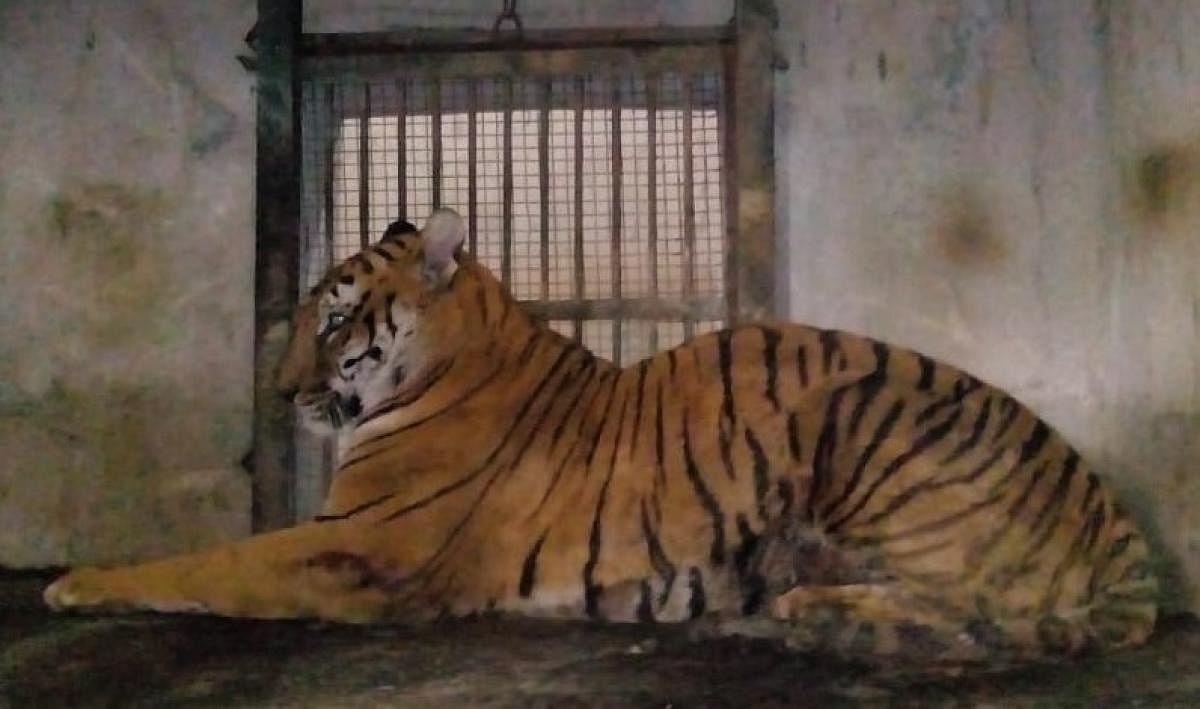
Poisoning of a full-grown Royal Bengal tiger on January 1, 2016 had brought bad name to Borobazar.
Three years later, residents of the area, adjacent to Orang National Park in central Assam have set an example by not only living with a Royal Bengal tigress for nearly one-and-half years but also helped the forest department to tranquillise her, recently.
The tigress, aged about 12-years killed over 70 animals—pigs, goats and cows as she roamed in the bushes of Borobazar area while she strayed out of the 78.81 sq. km. park in November 2017. She had escaped at least a dozen attempts by the forest personnel.
“Killing of the tiger in 2016 had brought bad name to our village. So we organised a meeting of the villagers in which we convinced them not to harm this tigress. The villagers reciprocated. Forest personnel made them aware about the ways to maintain safe distance from the tigress," Dipen Boro, a leader of All Bodo Students’ Union (ABSU), an influential students’ body, told DH.
They formed a tiger protection committee with 10 people in each of the 50 revenue villages under Borobazar area, who monitored her movement and informed the forest personnel over mobile phone. The tigress was code-named F-03 by National Tiger Conservation Authority.
Borobazar, having maximum Bodo community people falls under Udalguri district.
“Since December, we could not trace her. But on April 2, villagers informed us that a tiger was found roaming in the bushes in Borosola, situated about 25-km east of Borobazar. When we reached there, some residents had already turned hostile and pelted stones. We again sought help of ABSU leaders, who came rushing and convinced the mixed-population of villagers there. Finally, we could tranquillise her,” divisional forest officer of the park, Ramesh Gogoi said.
They were not convinced that it was F-03, but her photographs were matched with the ones taken in the camera trapping census in Orang in 2016 to confirm it. F-03, suffering from low eyesight, is now recuperating in Assam State Zoo, Guwahati.
Kamal Azad, a fellow with Tata Institute of Social Sciences, Guwahati, who is studying the issue of man-tiger conflicts, termed it a perfect example of man-animal co-existence. “From Avni in Maharastra to the killing of a Royal Bengal tiger in Nagaland’s Dimapur district in 2016, the tiger is harmed in most cases. But residents of Borobazar set an example. The community body like ABSU played a significant role,” he said. Azad was associated with NTCA and was part of the search in Borobazar.
The increasing population of tigers in Orang National Park is leading tigers like F-03 to stray out to the fringe villages. A camera trap census in 2017 found 24 tigers in Orang.